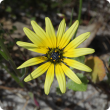Pasture management
The long term productivity and quality of pastures relies on good management skills. A well managed enterprise will maximise the economic viability of grazing systems through increased production of livestock. In cropping systems, shifting pastures towards legume dominance is also important. To successfully grow annual and perennial pastures, it is important to consider the influence of factors such as soil, climate, pests and grazing on each particular species.
The Department of Primary Industries and Regional Development provides information and advice to assist farmers to make appropriate decisions about weed management, fertiliser application, grazing systems, pest and disease management, seed production and seed harvesting. Meeting each species’ requirements is essential in order to realise the potential benefits from improved pastures.
Articles
Filter by search
Filter by topic
- (-) Remove Grains filter Grains
- Weeds (4) Apply Weeds filter
- Pests, weeds & diseases (4) Apply Pests, weeds & diseases filter
- Grains research & development (4) Apply Grains research & development filter
- Crop weeds (4) Apply Crop weeds filter
- Lupins (2) Apply Lupins filter
- Wheat (2) Apply Wheat filter
- Climate, land & water (2) Apply Climate, land & water filter
- Control methods (2) Apply Control methods filter
- Soil nutrients (1) Apply Soil nutrients filter
- Pulses (1) Apply Pulses filter
- Oats (1) Apply Oats filter
- Soil acidity (1) Apply Soil acidity filter
- Soils (1) Apply Soils filter
- Managing soils (1) Apply Managing soils filter
- Water management (1) Apply Water management filter
- Water (1) Apply Water filter
- Vegetables (1) Apply Vegetables filter
- Diseases (1) Apply Diseases filter
- Chemicals (1) Apply Chemicals filter
- Canola (1) Apply Canola filter
- Barley (1) Apply Barley filter
- Crop diseases (1) Apply Crop diseases filter
- Fruit (1) Apply Fruit filter
- Horticulture (1) Apply Horticulture filter
- Herbicides (1) Apply Herbicides filter
- Grapes & wine (1) Apply Grapes & wine filter
- Irrigated crops (1) Apply Irrigated crops filter






